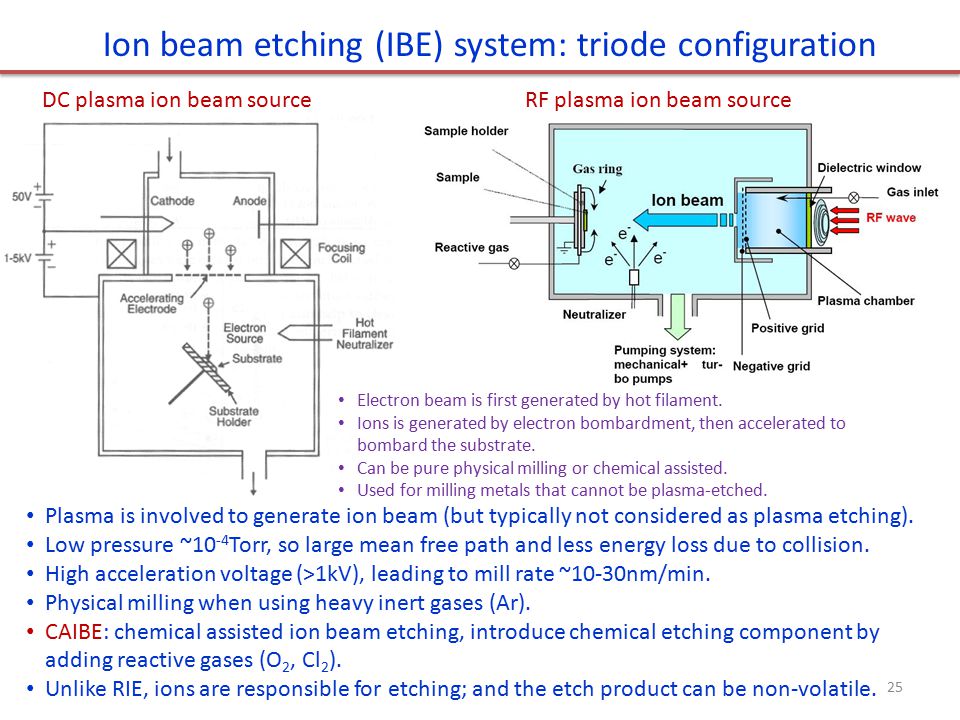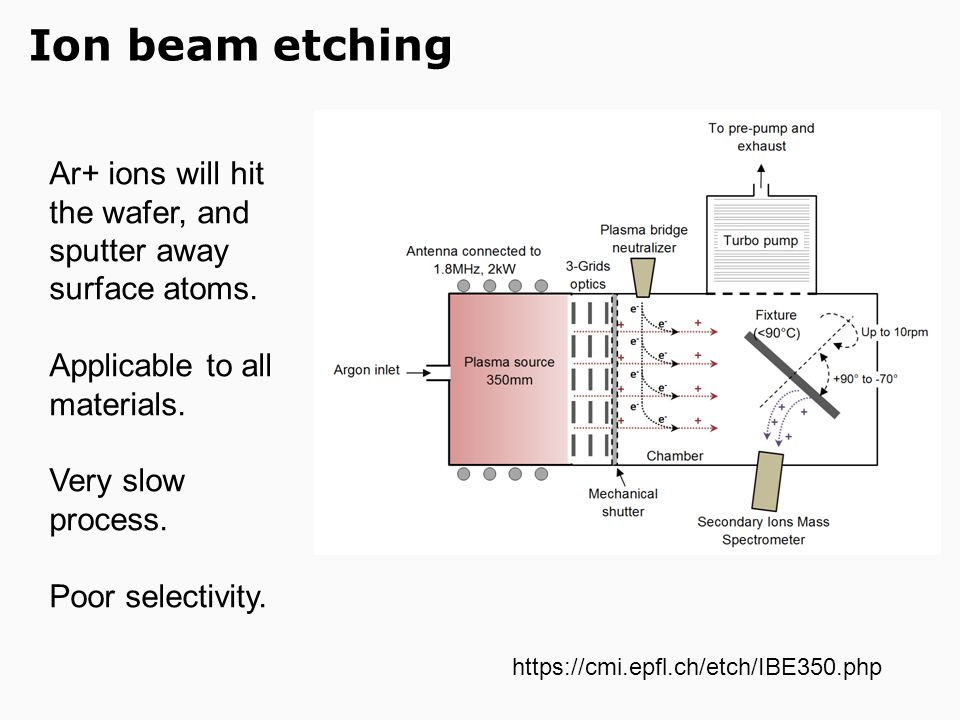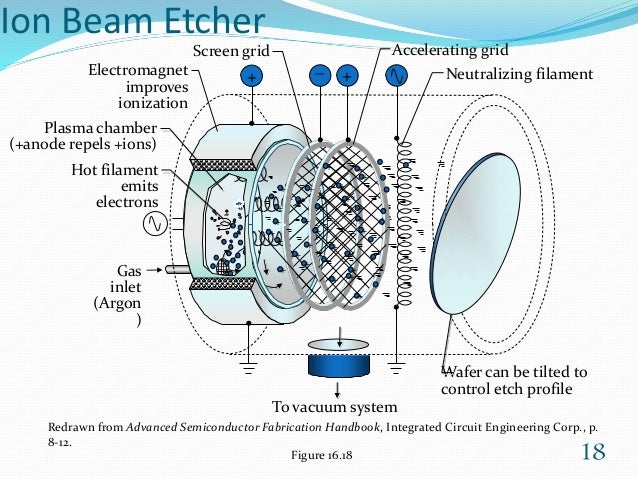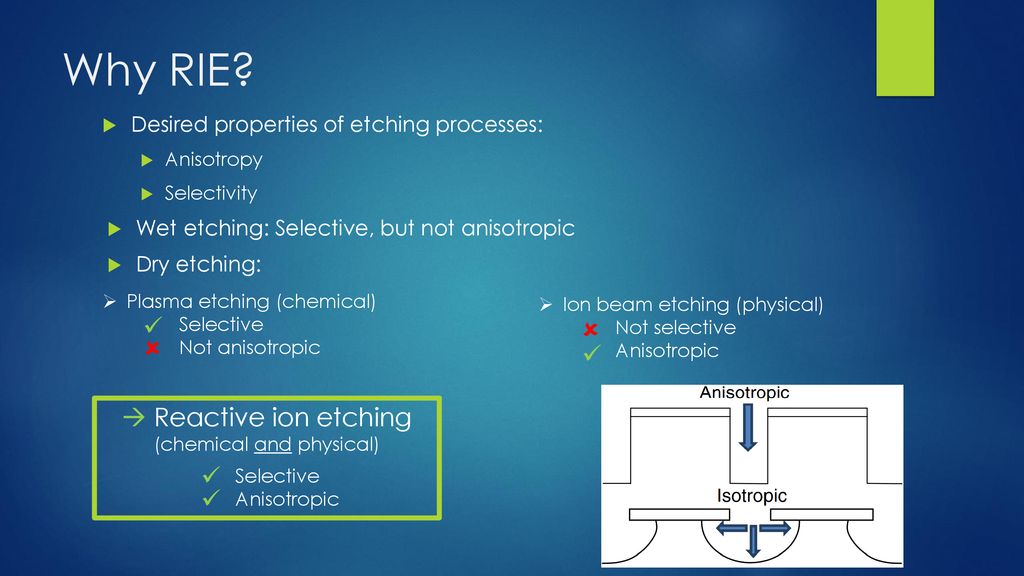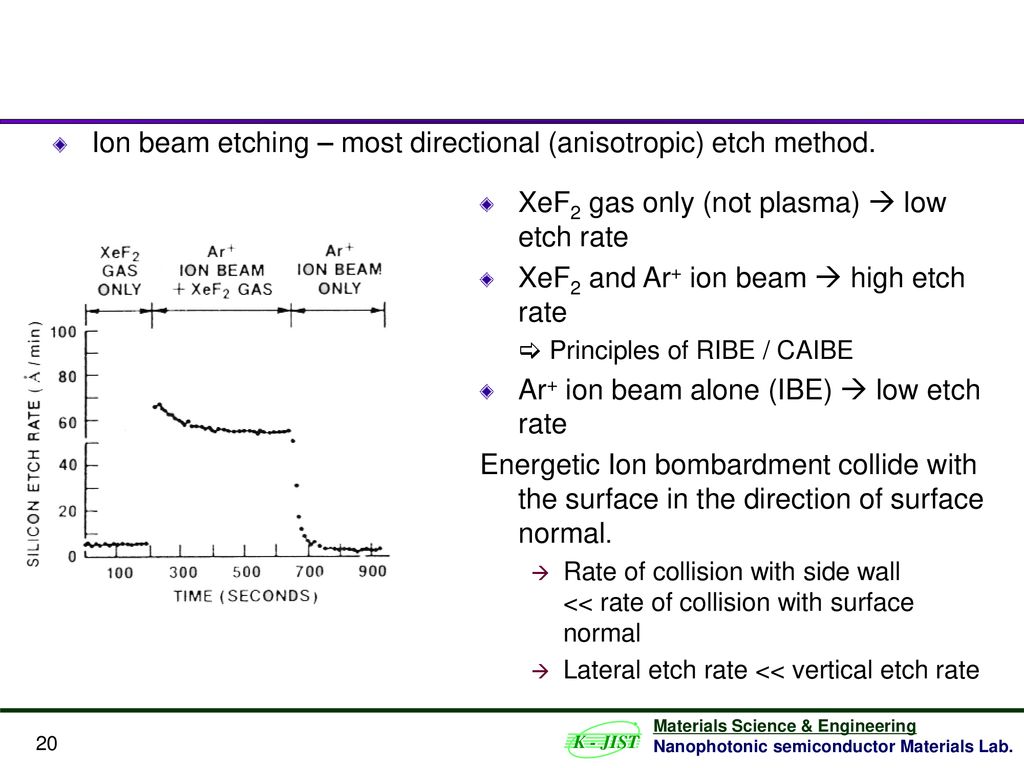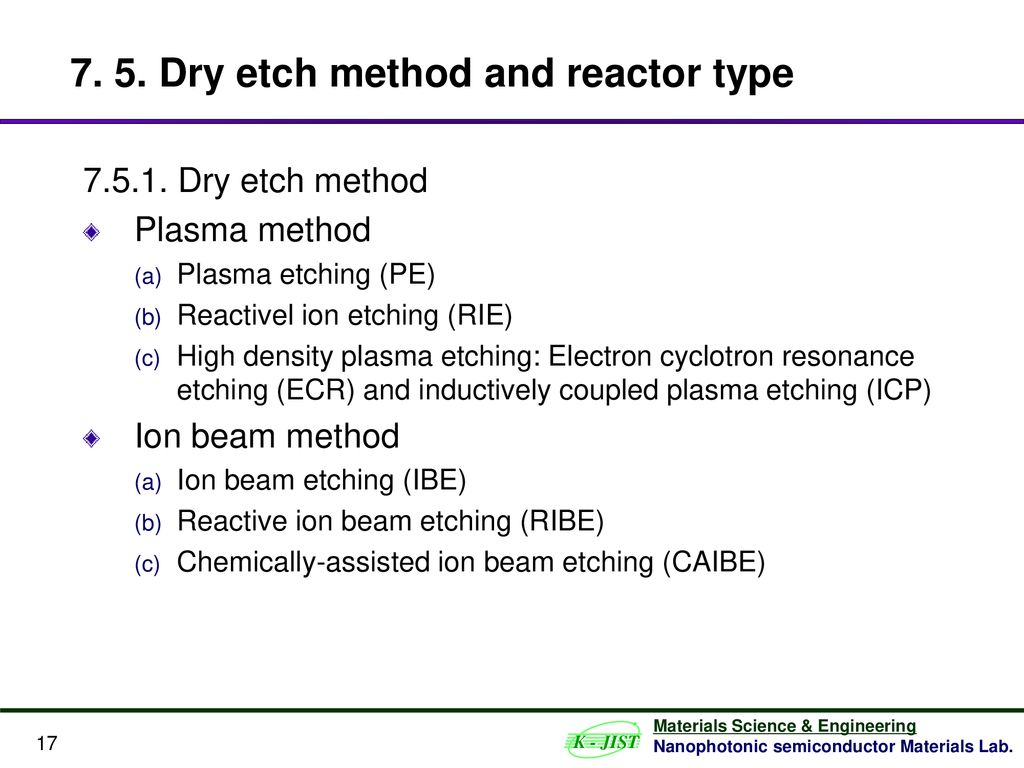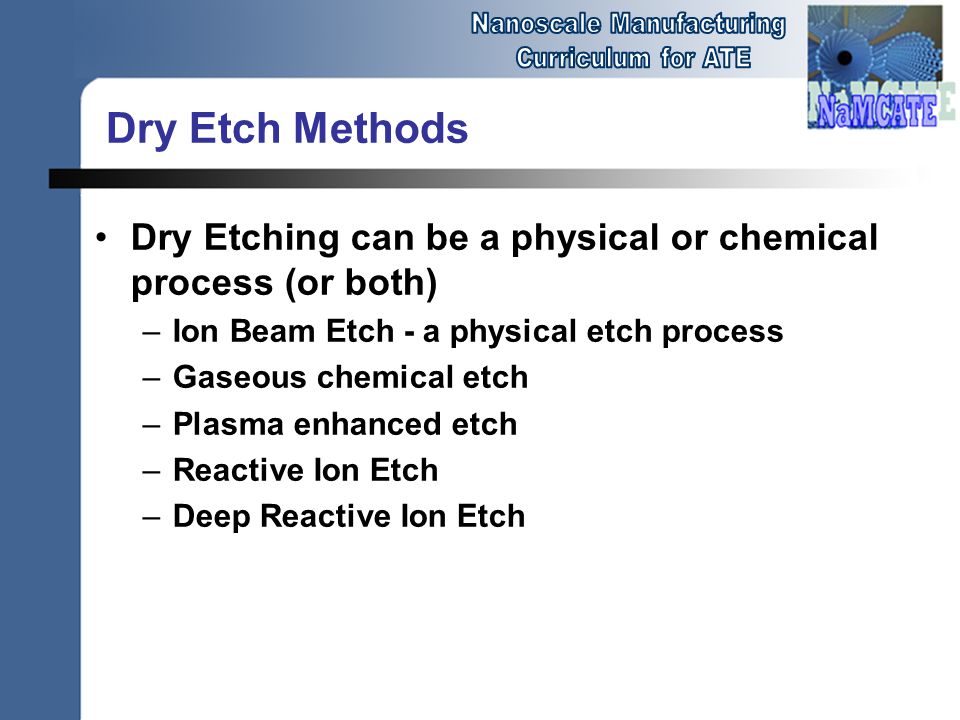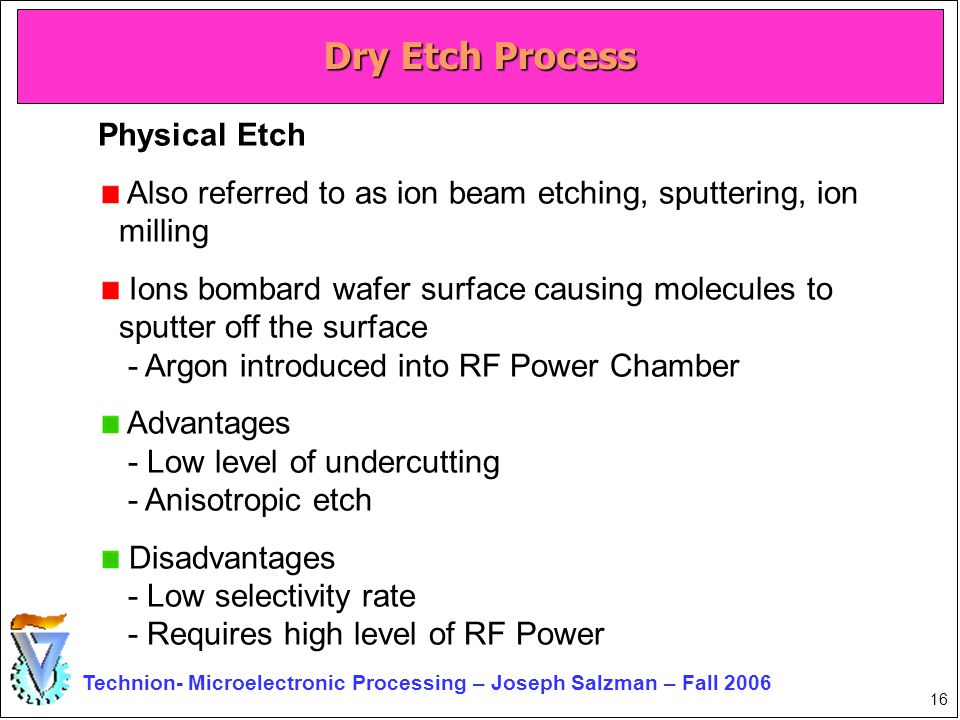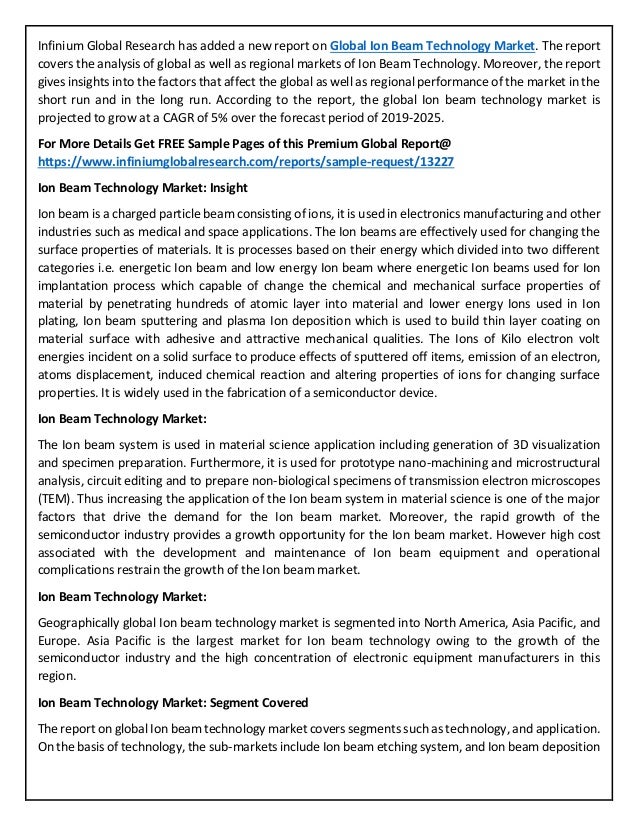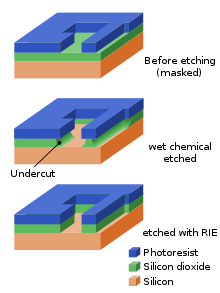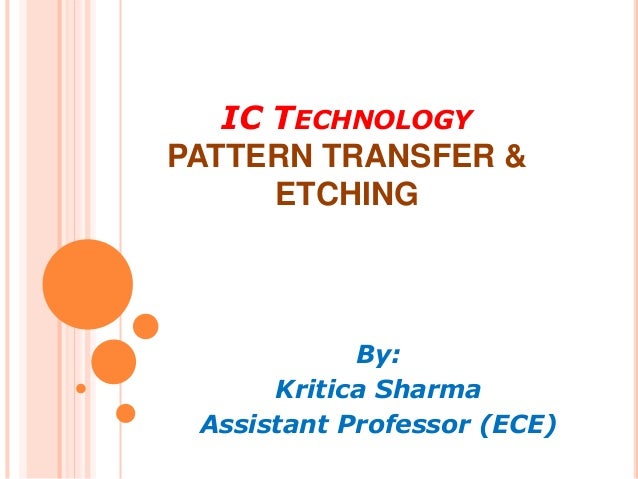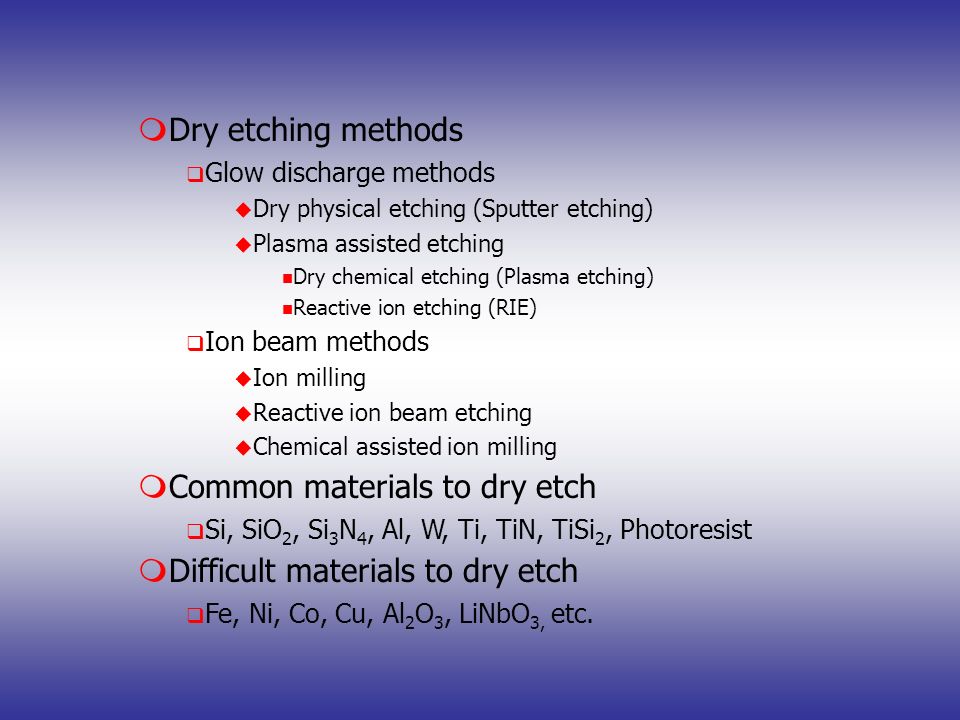Ion beam etching ibe removes material from the etch target by bombardment with directed and precisely controlled ion energies ibe is also referred to as ion beam milling ion beam etching has many applications including nano machining of magnetic transducers mems devices and trimming of surface acoustic wave saw and bulk acoustic wave baw filters.
Ion beam etching ppt.
Ion beam etching also known as ion beam milling or ion milling is the most widely used etching method for preparing solid state samples for scanning electron microscopy sem applications in this process the sample material is bombarded with high energy argon ion beams in a high vacuum chamber.
Tolerances in the vicinity of 50 å 5 x 10 mm are possible.
Ion beam etching or milling is achieved by directing a beam of charged particles ions at a substrate with a suitably patterned mask in a high vacuum chamber.
For an exact process control different end point detection systems can be equipped.
The etch tests were performed using the gatan ion beam etching and coating system pecs.
It enables highly directional beams of neutral ions to control over the sidewall profile as well as radial uniformity optimisation and feature shaping during nanopatterning.
The accuracy of the etching process is considerably high mainly due to the small amount of material removal.
Reactive ion etching rie is an etching technology used in microfabrication rie is a type of dry etching which has different characteristics than wet etching rie uses chemically reactive plasma to remove material deposited on wafers the plasma is generated under low pressure by an electromagnetic field high energy ions from the plasma attack the wafer surface and react with it.
Ion beam machining accuracy.
Normally for good uniformity the 15cm etch source can be used for wafers up to 4 while the 30cm etch source is suitable for wafers up to 8.
Full surface ion beam etching on 200 mm wafers the scia mill 200 is designed for structuring of complex multilayers of various materials.
Ion beam etching or milling is a dry plasma etch method which utilizes a remote broad beam ion plasma source to remove substrate material by physical inert gas and or chemical reactive gas means.
Applications of ion beam machining.
With the broad beam ion source in this system etch marks of about 10 mm can be achieved at vertical incidence of the beam dependent on the target material and the parameters.
With its fully reactive gas compatibility the system enables reactive etching processes with enhanced selectivity and rate.
Like other dry plasma etch techniques the typical figures of merit apply such as etch rate anisotropy selectivity uniformity aspect ratio and.


.jpg)
